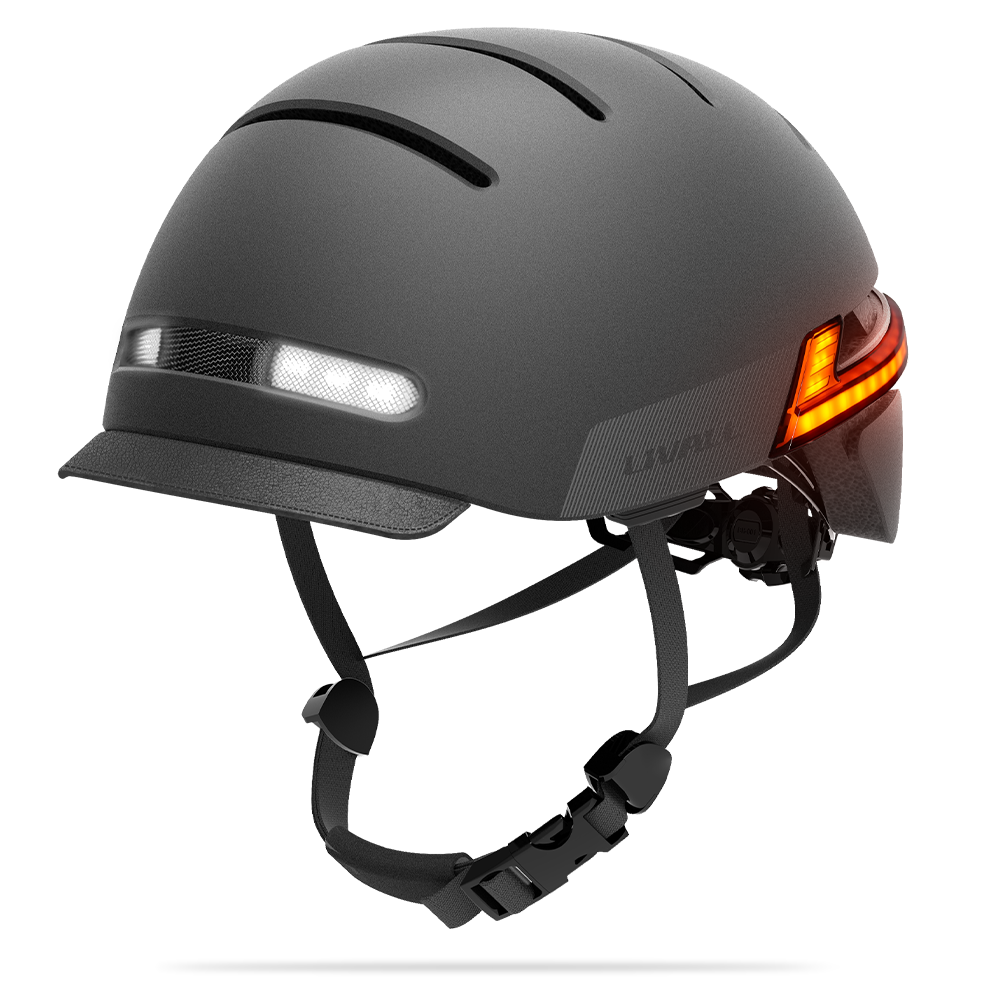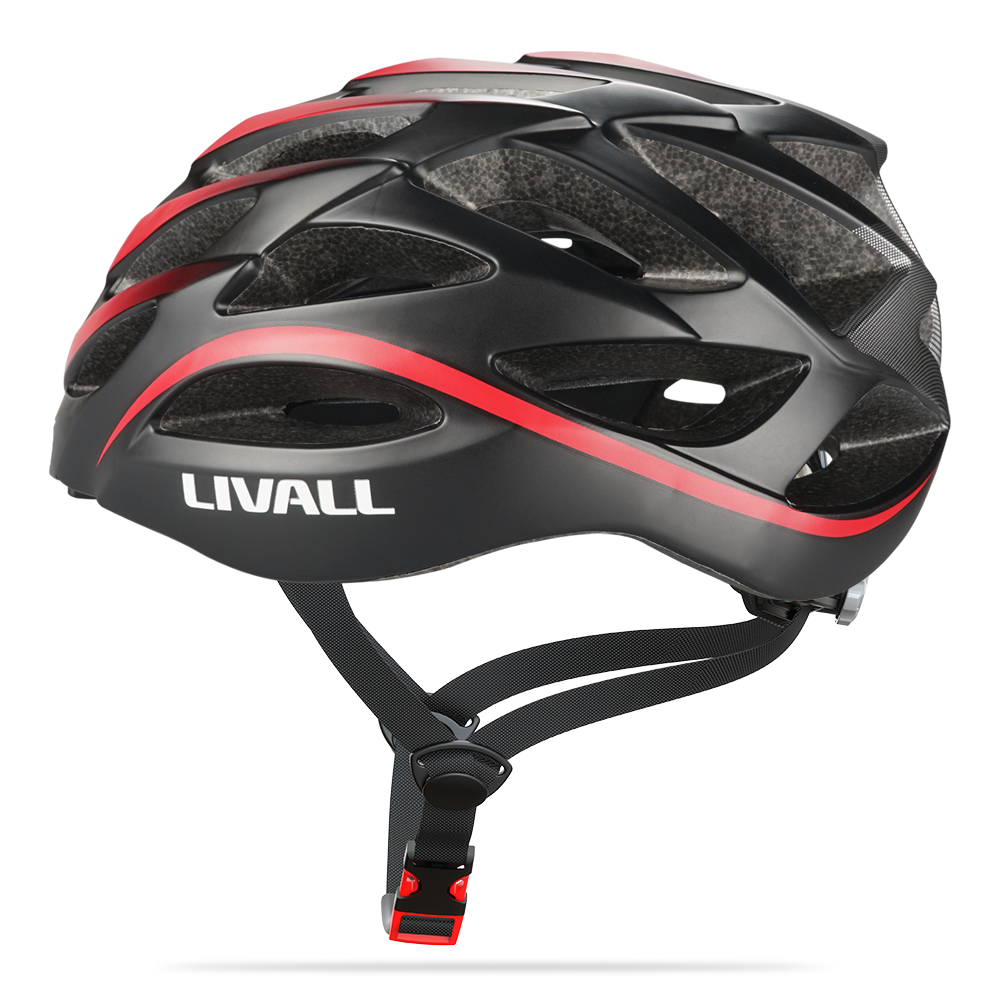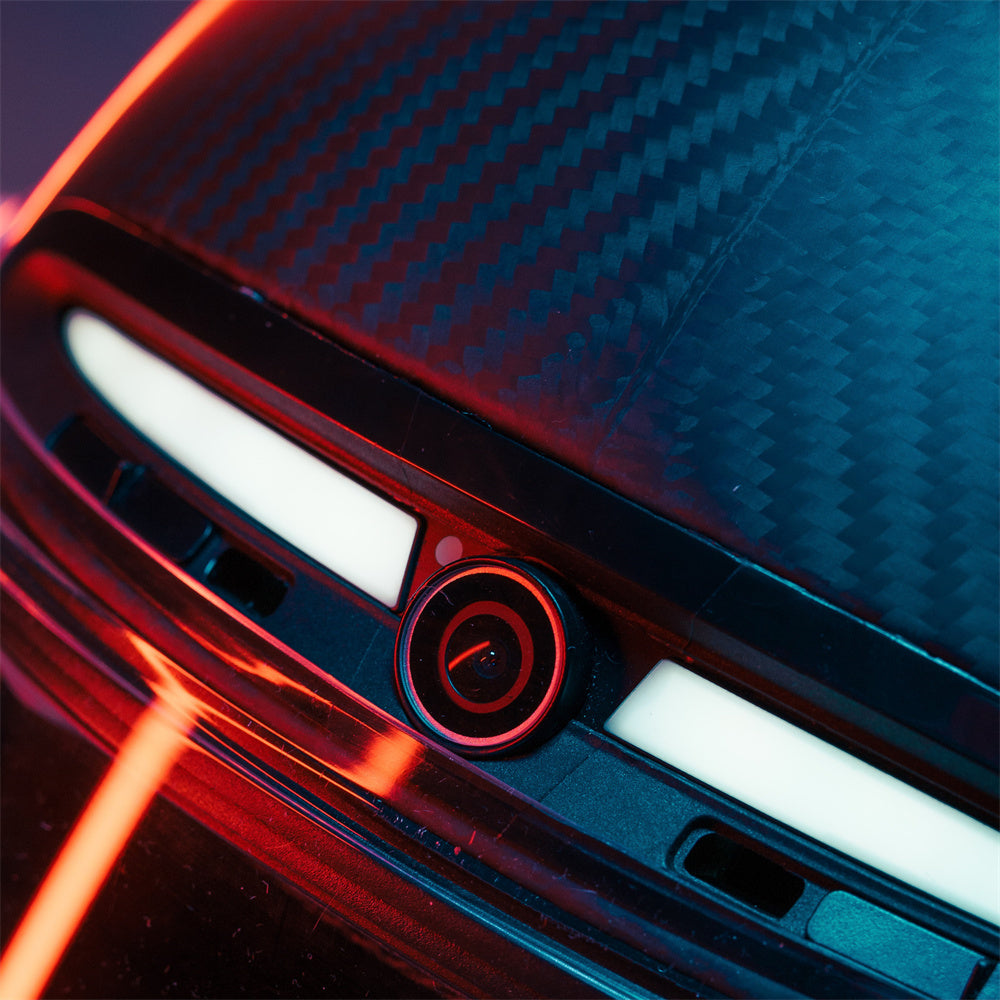Simple Steps to Make Your Dirt Bike Street Legal
Many dirt bike enthusiasts dream of transforming their off-road machines into street-legal rides. The process might seem daunting, but with the right steps and modifications, it’s entirely possible. Let’s dive into this comprehensive guide that will walk you through every detail, from understanding the basics to making the final tweaks on your bike, ensuring you can ride safely and legally on public roads.
Each state has its own set of laws and requirements, so it's crucial to start by researching the regulations specific to your location. Typically, this involves modifications to your bike to meet the same standards as other street-legal vehicles.
This includes ensuring your bike has the necessary safety features, such as proper lighting, mirrors, and a horn. Moreover, it involves meeting emissions standards and having the correct documentation, such as registration and insurance.
Can You Make a Dirt Bike Street Legal?
Absolutely! The process of making a dirt bike street legal involves several key steps, but it’s entirely achievable with the right approach and resources. But, what does it take?
Legal Requirements
You need to familiarize yourself with the legal requirements. These typically include modifications to your bike and ensuring it meets the same standards as other street-legal vehicles.
This means your bike needs to be equipped with certain features like lights, mirrors, and a horn, and it must pass an inspection to confirm these modifications are up to code.
Additionally, you need to ensure that your bike meets emissions standards set by your state or local authorities. This might involve installing a new exhaust system or making other changes to your bike's engine.
Modifications Needed
From lights to mirrors, various modifications are necessary. We’ll cover these in detail, but be prepared to invest some time and money into this process. You’ll need to install a headlight capable of both high and low beams, tail lights, brake lights, and turn signals.
Rear-view mirrors on both sides, a functional horn, and a speedometer are also mandatory. Emissions controls, such as a compliant exhaust system and possibly a catalytic converter, are crucial.
Lastly, you’ll need DOT-approved tires suitable for street use. These modifications not only make your bike street-legal but also enhance your safety on the road.
SEE ALSO : The Most Important Motorcycle Equipment for Beginners
Can You Ride Dirt Bikes on the Road?
The short answer is yes, but with some caveats.
State Regulations
Different states have different rules. In some places, you can ride your dirt bike on certain roads without modifications, while others have stringent requirements. Check your local DMV for the most accurate information. Some states allow limited use of dirt bikes on public roads for specific purposes, such as connecting trails.
However, to ride regularly on public streets, you’ll need to comply with all state-specific regulations. This includes having the right modifications, carrying the appropriate documentation, and adhering to traffic laws. Being aware of these regulations ensures you avoid fines and legal trouble.
Safety Considerations
Riding a dirt bike on the road is different from off-road adventures. Make sure you’re equipped with the right safety gear and that your bike is in top condition. Street riding exposes you to more traffic and different road conditions, requiring heightened awareness and defensive riding skills.
Wear a DOT-approved helmet, protective clothing, gloves, and boots to safeguard against injuries. Regularly check your bike for any mechanical issues, ensuring brakes, lights, and tires are in optimal condition. Safety should always be your top priority when transitioning from dirt trails to paved roads.
“For serious dirt riders, safety and connectivity are paramount. The LIVALL MC1 Pro smart carbon fiber motorcycle helmet has your back with fall detection and SOS alerts. Its built-in speakers and Bluetooth keep you in touch with your crew. Ride hard, stay safe, and never miss a beat with the LIVALL MC1 Pro. Push your limits with confidence.”
Essential Modifications for Street Legality
Now, let’s get into the specifics of what you need to change on your dirt bike.
Lighting System
Lighting is one of the most crucial modifications needed to make your dirt bike street legal. Proper lighting ensures visibility for you and makes you noticeable to other drivers, reducing the risk of accidents.
Headlights
Your bike needs a functional headlight. This isn’t just for visibility but is a legal requirement. Ensure that your headlight is capable of both high and low beams. A dual-beam headlight helps you adapt to different lighting conditions, enhancing visibility at night and in low-light scenarios.
It’s essential to install a headlight that meets your state’s brightness and positioning standards. Check the alignment regularly to ensure it points correctly and provides adequate illumination without blinding other drivers.
Tail Lights and Brake Lights
Tail lights and brake lights are crucial for signaling your intentions to other drivers. LED lights are a great option as they are bright and consume less power. They illuminate quickly, giving drivers behind you more time to react when you brake or turn.
Proper installation is key to ensuring they function correctly and are visible from a distance. Regularly check the wiring and connections to prevent any failures. Proper tail lights and brake lights are essential for avoiding rear-end collisions and ensuring overall road safety.
Mirrors
Install rear-view mirrors on both sides to enhance your visibility and meet legal standards. Mirrors help you keep an eye on traffic behind you, ensuring safer lane changes and turns. They provide a broader view of the road, reducing blind spots and allowing you to react promptly to vehicles approaching from behind.
Choose mirrors that are durable and provide a clear, undistorted view. Adjust them properly before each ride to ensure optimal visibility. Regularly clean and maintain the mirrors to keep them in good condition, ensuring they remain effective in all weather conditions.
Horn
A horn is another requirement. It doesn’t have to be fancy, just functional. A loud, clear horn can alert other drivers and pedestrians to your presence, increasing safety. It’s crucial for communicating your position and intentions in traffic, especially in congested areas.
Install a horn that meets the decibel level required by your state regulations. Test it regularly to ensure it’s working correctly. A functional horn can be a lifesaver, helping to prevent accidents and ensuring you’re heard in emergency situations.
Speedometer and Odometer
You need to know your speed and the distance traveled, so a speedometer and odometer are necessary additions. Digital speedometers can be a good choice as they are easy to read and often include additional features. They provide accurate real-time data on your speed and distance, helping you stay within legal speed limits and track your bike’s usage.
Choose a speedometer and odometer that are compatible with your bike’s specifications and easy to install. Regularly calibrate them to ensure accuracy. These instruments are crucial for legal compliance and maintaining a record of your bike’s performance and mileage.
Emissions and Noise Control
Keeping the environment in mind is important too.
Exhaust System
A compliant exhaust system is required. This means your dirt bike needs to meet certain emissions standards. An aftermarket exhaust system that includes a spark arrestor and meets EPA noise and emissions regulations is ideal.
It reduces harmful emissions and ensures your bike operates within the permissible noise levels. Regularly inspect the exhaust system for leaks and damage. Proper maintenance of the exhaust system not only helps in legal compliance but also enhances your bike’s performance and fuel efficiency.
Mufflers
Mufflers help reduce noise pollution. Make sure your bike has one that’s up to code. Look for mufflers that provide good noise reduction without sacrificing performance. They minimize the noise generated by the engine, making your ride quieter and more pleasant for you and those around you.
Install a muffler that fits well with your bike’s exhaust system and meets the noise regulations of your area. Regular maintenance is essential to keep the muffler functioning effectively. A well-maintained muffler ensures your bike remains quiet and compliant with noise standards.
Catalytic Converter
In some states, a catalytic converter might be necessary to reduce emissions. Check your local regulations to see if this is required and ensure your converter is properly installed. A catalytic converter helps in converting harmful gases from the exhaust into less harmful emissions, making your bike more environmentally friendly.
Install a high-quality converter that fits your bike’s exhaust system. Regularly check and maintain the converter to ensure it remains effective. Compliance with emission standards is crucial for legal riding and reducing your bike’s environmental impact.
Tires and Wheels
Your tires need to be road-ready. Proper tires and wheel alignment are essential for safe and legal street riding.
Street-Approved Tires
Off-road tires won’t cut it on the pavement. You need tires that are DOT-approved for street use. These tires provide better grip and handling on asphalt, improving safety and performance. They are designed to withstand the wear and tear of paved roads, offering better traction and stability.
Choose tires that match your bike’s specifications and are suitable for the types of roads you’ll be riding on. Regularly check the tire pressure and tread depth to ensure optimal performance. Street-approved tires are a critical component for safe and legal riding on public roads.
Wheel Alignment
Proper wheel alignment ensures safe handling and is often checked during inspections. Misaligned wheels can cause uneven tire wear and affect the bike’s handling. Regular alignment checks help maintain stability and prevent accidents caused by poor handling.
Ensure that both front and rear wheels are aligned correctly according to the manufacturer’s specifications. Wheel alignment should be part of your regular maintenance routine to ensure safety and optimal performance on the road.
Misalignment not only affects handling but can also lead to increased wear on other components, leading to more frequent and costly repairs. Keeping your wheels properly aligned enhances the overall riding experience and ensures your dirt bike remains in top condition.
Registration and Insurance
Once your bike is modified, it’s time to get it registered. Proper registration and insurance are crucial for legal compliance and financial protection.
Getting Your Bike Inspected
An inspection will ensure your bike meets all the necessary standards. This step is crucial for registration. Schedule an inspection with a certified mechanic who can verify all modifications.
The inspection will cover all aspects of your bike, including lighting, emissions, and safety features. Passing the inspection certifies that your bike is safe and legally compliant. Regular inspections are also a good practice to maintain your bike's performance and safety over time.
Obtaining a License Plate
After passing the inspection, you can apply for a license plate. Make sure to affix the plate in a visible location as required by your state’s laws. The license plate must be securely attached and clearly visible to other road users and law enforcement.
Proper placement and visibility of the license plate help avoid fines and ensure legal compliance. It's a critical step in transitioning your dirt bike from off-road use to a street-legal vehicle.
Insurance Requirements
Insurance is a must. Check with your provider to get a policy that covers your newly street-legal dirt bike. Look for policies that offer comprehensive coverage, including liability and collision. Insurance provides financial protection in case of accidents, theft, or damage.
Ensure your policy meets the minimum requirements set by your state and provides adequate coverage for your needs. Regularly review and update your insurance policy to keep it current and reflective of any changes to your bike or riding habits.
Licensing and Documentation
Proper documentation ensures you’re covered legally and can prove ownership and compliance if needed.
Title and Registration
Make sure your bike’s title and registration are up to date. This will avoid any legal issues down the road. Keep copies of all your documentation in case you need them while on the road.
The title proves ownership of the bike, while the registration shows that it is legally allowed to be on the road. Keeping these documents updated and readily available helps you stay compliant with legal requirements and can simplify interactions with law enforcement if stopped.
Keeping Documentation Handy
Always carry your registration and insurance documents when riding. Having these documents readily available can save you from fines and other legal issues if stopped by law enforcement.
Store them in a waterproof, easily accessible location on your bike or in your riding gear. This ensures you can quickly provide proof of registration and insurance if required. Keeping your documentation handy also helps in emergency situations, providing necessary information for first responders or insurance claims.
Final Checklist Before Hitting the Road
Safety Gear
Wear a helmet, gloves, and other protective gear. Safety first! Consider additional safety gear like knee pads, elbow pads, and a riding jacket with armor for extra protection.
Proper safety gear not only protects you in case of an accident but also enhances your comfort and performance while riding. Make sure all your gear is DOT-approved and fits correctly. Regularly inspect and maintain your gear to ensure it remains effective and in good condition.
Double-Check Modifications
Ensure all modifications are secure and functioning properly. A quick pre-ride inspection can prevent mechanical failures and ensure a safe ride. Check the lights, mirrors, horn, and tires for any issues.
Verify that all bolts and fastenings are tight and that the bike is in overall good condition. This pre-ride check helps identify and address any potential problems before they become serious issues on the road.
Conclusion
Converting your dirt bike to be street legal is a rewarding project that opens up new riding opportunities. By following the steps outlined in this guide, you can enjoy the thrill of the trail and the convenience of the street. The process involves various modifications, from lighting and mirrors to emissions control and documentation.
While it requires an investment of time and money, the benefits of a street-legal dirt bike are significant. You gain versatility, increased resale value, and the ability to ride legally on public roads. Take the necessary steps, consult professionals if needed, and enjoy the freedom of riding your dirt bike wherever your adventures take you.
FAQs
Can I ride my dirt bike on the highway?
No, even with modifications, most dirt bikes are not suitable for highway speeds and conditions.
What is the cost of making a dirt bike street legal?
Costs can vary widely depending on the bike and the extent of modifications needed, but expect to spend anywhere from a few hundred to over a thousand dollars.
Can any dirt bike be made street legal?
Not all dirt bikes can be easily converted, especially older models or those with engines not designed for street use.






























































Leave a comment